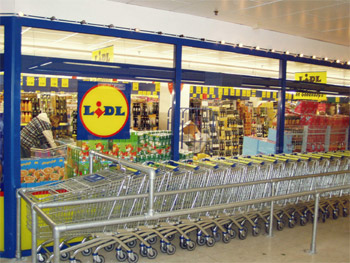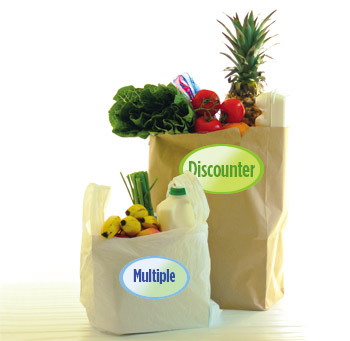The discount debate

A recent ShelfLife online survey of consumers’ attitudes to shopping at discount stores, Aldi and Lidl, throws up some interesting findings.
16 March 2010
 One of the most interesting findings of this survey was that a massive 65% of respondents said that they had visited an Aldi or Lidl store to buy a specific item (hobby or household) that they had seen advertised. When asked if they had actually purchased the item, 73% said that they had. We then asked if they had purchased other items as well – 72% said they did and 28% did not which goes to prove that the discounters have got this strategy bang on the money.
One of the most interesting findings of this survey was that a massive 65% of respondents said that they had visited an Aldi or Lidl store to buy a specific item (hobby or household) that they had seen advertised. When asked if they had actually purchased the item, 73% said that they had. We then asked if they had purchased other items as well – 72% said they did and 28% did not which goes to prove that the discounters have got this strategy bang on the money.
We also asked consumers if they would still have visited the store if they had not wanted the item they had seen advertised. 44% said they would, while 56% said they would not have made the journey if they had not been tempted by the hobby or household product on offer.
Lidl over Aldi
The bulk of respondents who said that they would shop at a discounter expressed a preference for Lidl at more than 44%. Aldi received less than 11%, while 45% claim to shop in both.
Asked how often they would shop at a discounter (Aldi or Lidl) – the majority, 37%, said once a month; 15% said once a week; 14% said once a fortnight with only 2% claiming to be regular two to three times a week shoppers.
From the survey it would appear that the discounters have a large tranche of people who have not converted to discount shopping with 32% claiming to shop at discounters on a much less frequent basis with answers such as “two to three times a year”, “every six months”, “at random intervals”, “once a year” and “very rarely”. When asked how much they spend on average respondents answered: 29% claimed to spend €30 to €50; 23% spend between €50 and €100; 22% spend between €20 and €30; 15% spend between €10 and €20; 6% spend under €10 and 4% spend between €100 to €140 with just 1% claiming to spend in excess of €150 on average per shopping trip.
Asked if they shopped more or less frequently at a discounter than they did six months ago, 51% said their shopping trips to discounters had not altered. However 28% said they were more frequent visitors to discounters and 21% said that they now visited less often.
We then asked those who said they were more frequent shoppers to list the reasons why. 63% said it was because of price, 20% location, 5% prefer the grocery range, 3% prefer the non-grocery range while 9% stated “other” as the reason for their increased usage of the discount operators. When asked to specify “other” reasons mentioned were wines, chocolate and freshness of fruit and vegetables.
Brands still retain some clout
We asked respondents if they would buy branded products over cheaper, non-branded goods when shopping at a discounter. Good news for the brands as 45% said they would buy branded products; 16% said they would not while 39% said they would sometimes buy branded over non-branded. For those who answered “sometimes” we asked them to name the brand of the product they would purchase.
Answers included: “Coke, Weetabix, Finish, Kellogg’s, Heinz and Hellmann’s”. When asked which branded product categories they would choose over non-branded the main answers given were: “household cleaning, washing powder, dairy, soft drinks and canned goods”.
Many shoppers still want to buy Irish
Finally we asked respondents who did not regularly shop at discount outlets to list the reasons why. 30% said that they preferred to support Irish retailers. 23% said that they did not think the products were of the same quality as branded goods. 14% claimed not to like the range available at discounters. 14% said that they found the outlets depressing places to shop while 6% said that there was no discounter located near them.
For those who did not agree with any of the above statements we asked them what were their objections to shopping at Aldi and Lidl? This is a selection of the answers received: “I want to buy Irish produce and organic. I like a selection”; “You feel poor when you go there”; “They don’t take credit cards”; “Because I still prefer to buy some branded products and this would mean going to two different supermarkets”; “I can get similar value in my usual supermarket”; “Shopping there is generally a manic experience”; “Atmosphere is very common, can be subtly aggressive”; “They don’t carry the full range”.
Note: The survey was conducted online via Zoomerang.com during late February/early-March. 64% of respondents were female and 36% were male. 91% of respondents were aged between 25 and 54 with the bulk (47%) falling into the
25 to 34-age bracket.



 Print
Print






Fans 0
Followers